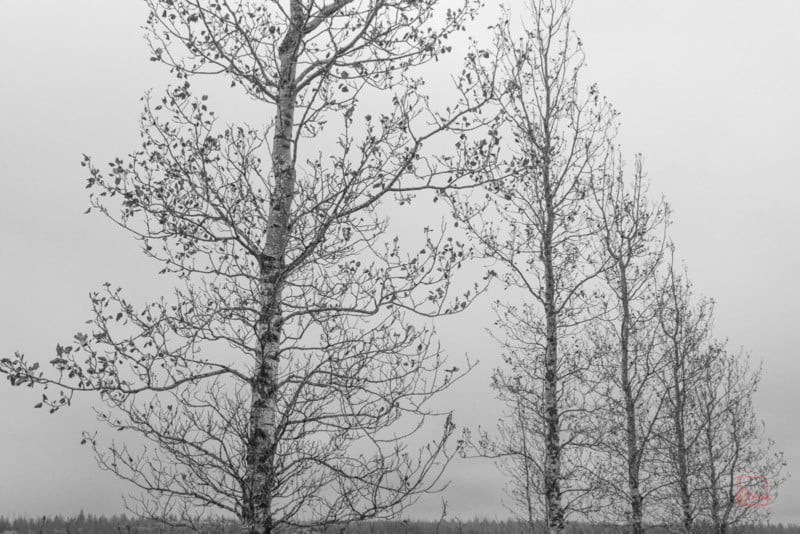News
Shooting ‘Haiku Photos’ in Iceland
Published
2 years agoon
By
Robert King
![]()
I recently returned from 10 days in Iceland. After years of critiquing students’ photos with respect to “haiku photography,” I thought it would be useful to point that laser at my recent shooting.
Before I left I had been looking at photographer Chris Burkard’s Summer photos from his off-grid adventure in Iceland. I was both jealous of what he’d been able to see and shoot, and accepting that my trip would be my trip and wouldn’t look like his at all. I obviously wanted to document my unique experience in a highly photographed place, and if possible, create photographs guided by the haiku principles.
Traveling Light: Tech and Gear
While in Iceland, I toured around in a rental car and saw what was on the route. I carried no bag, just three batteries, and the camera (a Fuji X-T2, with an 18–135mm zoom) ever-slung over my shoulder. The first part of my practice is to be light and inconspicuous.
I shot 1500 images in 10 days; I’d say that was a pretty light touch. Iceland is continuously scenic and demands much attention. I wanted to be measured in my shooting. That was the second part of the practice.
After the trip ended I made a photo essay travelogue (on Blurb), consisting of 140 photos. 40 of these are my favorite stand-alone shots. Next, I refocused more critically on the few images that “deserved” to be printed, a couple of which are also haiku. Today I made nine larger format prints (13×19). I was interested to notice this aligned with the ratios I typically see in my work: regardless of how much I shoot, I end up with ~10% as “selects” and ~1% as “keepers.”

Identifying Haiku Principles in Photographs
First, let me give a brief overview of what to look for in photographic haiku:
They will have a quiet beauty, but not be over-the-top. They’ll not (just) be cool looking, but of something going on — an inexplicable moment. A universal truth. And with luck, a discovery. A little smile.
The photos have two uneven visual beats — the first thing you see when you look, and then something that hits you a moment later. I find that more than any other attribute, this fundamental structure defines the haiku. Haiku poems are in the moment, and haiku photos are going to be more moment than object.
Some of my personal favorite photos are haiku in every respect, except they are “more object than moment.” Not to put too fine a point on it, but it means they’re not haiku. Photos can be many kinds of poems, and only one of them is haiku. As a student of this thinking, you should be able to identify the haiku images. And appreciate the ones that are not.
Haiku tend to be unusually simple, doing a lot with a little. They are uncluttered visually. Haiku or not, it’s a good practice to take visually uncluttered photos, noticing what’s in the frame and making sure it matters.
Shooting haiku provides a framework to think about the photographic levers one always has in hand. I believe these levers (or axes) are particularly nice ways anyone can adjust the pictures they take — to whatever goal you might have. In my case, it’s to generate more widely enjoyable, visually unique, and long-satisfying photos.
My photographic axes are:
- VISUAL RHYTHM: (0, 1, 2, 3+), beats, even or uneven
- TIME: Object → Moment
- COMPOSITION: Informal → Structured
- PRESENTATION: Obvious → Mysterious
- “TRUTH”: Fabricated →Authentic
Photographers do these sorts of adjustments to their picture-taking unconsciously, without the language, and frankly have been doing this organically throughout the 20th century.
The attributes of haiku continue to show up in the history of great photography, but they are by no means descriptive of all great photos. The new thing here is this language, this way to talk about pictures, which come from haiku and are instructive when applied to photography.
My Iceland photos were fun to make. Little origami. I’ve printed some. They’re real — both image and an object. That’s important to this process.
For explanatory purposes, I’m going to describe creating two photos I like a lot, one a haiku and one not, in hopes the behind-the-scenes conversations in my head, and subsequent critique, helps you with your own photographic explorations.
Behind the Scenes

This was taken at Þingvellir National Park on the first day of the road trip. I had pulled up to the park’s main visitor center that morning and walked out to the overlook pictured here. Standing up there I could see the valley below filled with rivers and lakes, and occasionally, trees changing color. There was a continuous flow of tourists around, all taking pictures of the vista and probably also these colorful trees. Probably the same photo from the same vantage point from hundreds or thousands of people every day. This would be the “obvious” photo, the Mt Rushmore shot.
I didn’t take the obvious one: I looked over the cliff – it was beautiful. I was more interested in looking at the people on the lookout. It was a quieter, more unusual way of showing what was happening there, rather than showing the panorama itself. Although the photo was flat. Oh well…

I drove away from the visitor center and soon turned onto a road that led to a waterfall. The valley is a geological site where two of the Earth’s plates meet. Driving around I didn’t expect to find SCUBA divers in a park in central Iceland. When I stopped to check out the divers I noticed I was just below the lookout where I had been standing earlier.
![]()
I was interested in the (funny) juxtaposition of the autumn trees and the anonymous humans watching — and pulled out my camera. At first I was enjoying the simple silhouette of the tourists looking down, with just a hint of the trees, which I didn’t want to be too gratuitous. I divided the frame pretty evenly between light and dark, the cliff edge running about mid-frame. But exposure was tricky — the sky was very bright and fully cloudy, the valley was dark, and the whole thing felt flat.
Standing still and only making small tweaks to the composition, I was seeing if I could balance my competing needs. I shot four frames over those first few minutes, experimenting quickly with different proportions. I wanted to zoom in on the people, but then I lost the trees, and when I pulled back for more trees, the people got too small — and I wanted to hang onto the various ways they gathered in clumps of individuals or families. I could see the crowd changing pretty quickly. I minimized the sky in exchange for more trees and more color, and then I held still looking through the lens until the quantity (and dispositions) of the people on the cliff felt right. Frame four was my favorite: I was satisfied.
I turned to walk back toward the car and mindlessly shot two other quick images of the road and sky as I took a few steps. But I noticed a better vantage point to see the trees so I pulled off one more frame — and as is often the case, the last was my favorite.
This image has the two beats I wanted. The first is the colorful trees — your eye starts there. Most people shoot colorful trees — and I’d say that would be “obvious;” alone it wouldn’t be particularly poetic. But the spectators provided a second, quieter beat, and it changed the way I felt about the scene. The addition of the spectators shifted it to more of a moment and more personal.

It’s visually simple and it’s obviously composed purposefully, but it’s also not too stiff. It’s authentic to my experience, a quick moment of discovery in my day; I didn’t plan or direct it.
For me, it’s a good example of a photographic haiku.
The Haiku
This poem is in seeing these beautiful emblems of time’s passage and our own small vantage point played out before us. That it is us, rolling through time, little players on that stage. There’s something bittersweet in feeling the cycles of changing seasons. All of this is a pretty classic theme in old haiku.
Moreover, I think of myself being on that cliff: that photographer’s silhouette represented me earlier in the day.
Behind Photo 2

This photo is not a haiku, but I like it very much. It illustrates some of the issues in the poetic form. The inspiration came from days of passing rows of trees that often lined the roadway. They were all over the country and felt unique to this place. Evenly spaced, almost clones of each other. The trees seemed to illustrate the design formality I felt in Iceland; over the course of the trip, I was often thinking about how to capture the rhythm of the trees I’d pass. For days, when I’d pass these arrangements of trees, I’d see if there was a way to pull over (difficult in Iceland) where I’d have a chance to look at them more closely.

When I finally did I wasn’t sure how to shoot what I felt. Was it a glancing view? I shot a few along the road, but by the 3rd shot I had decided formally squared off was my preference. By squaring off with the trees, it felt a more formal and purposeful composition. How many trees (and how much of the trees) should I show to demonstrate its order? If I’m too close you don’t see the rhythm; if it’s too wide it gets cluttered.
And how to balance the simplicity and the authenticity? Do I want to show the fields beyond the trees? Or try to shoot the trees evenly backlit with a rainy sky?
![]()
Over the next few minutes, I moved a bit here and there, closer and farther. All shot at f/8 — a pretty deep depth of field but with nothing in the background it wouldn’t matter. I liked seeing as many identical trees as possible. The final frame was too perfect, and felt like mass-produced wallpaper; the goal was for something to be slightly akimbo.
Seven images were shot. In the end, I selected the fifth, and lightly pushed the exposure and color to warm up the cold and increase detail in the trees.
Experiments in Creating Two Beats
While not a haiku, the photo still is designed to have two beats. Beats are often two objects in the frame, but in this case, my beats weren’t two separate things. The first beat is the PATTERN, the rhythm is the first thing you strongly see. The second beat is in noticing these are almost-identical trees. The juxtaposition that makes me smile is between form and content.

I liked shot 4, but it felt busy. In shot 5, I lowered my vantage point which made the background disappear. This simplified the frame, highlighting the shapes and details in the trees. In addition, by including the slightly more foliage on the far left tree, I diminished the perfection of the scene and experienced a little more wabi sabi.
The struggle with this, and in fact a few of the other photos, was that they were “more object than moment.” Both portraits and landscapes are extremely difficult to shoot as haiku — portraits tend to be set up in some way and try to flatter subjects; landscapes and other still-life textures are invariably beautiful objects and often not particularly personal. It’s more difficult to make the object-leaning images feel of a time as well as of place, to make them feel unique to me. Still, not everything is a haiku and there are many poetic photographic forms: “cool looking stuff seen in unique ways” is one. They can still have rhythm and mystery and poetry to them.
Poetic
This poem is about the funny interaction of humans and nature, the unique way Iceland co-exists in this raw wild form, but with a clean and forced order. It was a feeling I had often in Iceland and this photo articulated it for me. It was also a kind of scene that was prevalent on the road trip, captured here.
There you have it. I hope this illustrates the shooting process and haiku executions in a real-world scenario. These photos were just travel photos and serve as well as any postcard to illustrate and memorialize moments from my vacation, savoring the unique beauty and idiosyncratic experiences. My goal would always be to be practicing my haiku, as well as having many beautiful photos to remember the time exploring Iceland.
About the author: M.H Rubin, formerly of Lucasfilm, Netflix, and Adobe, is a photographer, author of the upcoming “The Photograph as Haiku” (2023), and host of the podcast “Everyday Photography, Every Day.” The opinions expressed in this article are solely those of the author. To see more from Rubin, visit Neomodern or give him a follow on Instagram. This article was also published here.
Recent News


Instagram Story Viewer: Shaping Social Media!
Could you think of Instagram without stories? Even though Instagram Stories were introduced not so long ago, in 2016, they...


Top Benefits of Using a Phone Appending Platform for Batch Data Updates
In the world of data-driven marketing, having access to accurate and current contact information is essential for successful customer outreach....


3 Tips for Dressing Perfectly for Special Occasions
Dressing for special occasions can sometimes be a stressful and overwhelming process, especially for women. Whether you’re attending a wedding,...


Maximise Your Hunting Success with Dive Bomb Industries Decoys
When it comes to hunting, there’s no such thing as too much preparation. Hunters understand that the right equipment can...


Castle App Free Download — Updated 2024 Version
What is Castle App? Castle App, a stream app developed for streaming media content, makes entertainment effortless by giving clients...


How to get a duplicate RC book for your vehicle: A step-by-step guide
If you have lost or damaged your vehicle’s registration certificate, you must be tense and under stress. But getting a...


Enhancing Property Value Through Professional Builders Cleaning Services in the UK
Construction and renovation projects make a ton of residue, garbage, and soil, passing on a requirement for proficient cleaning to...


Saturn in Sidereal Pisces-March 28,2024 to February 21st 2028 by Jade Luna
I really wanted a female president governing this cycle but the chart of America would choose the hardest path, not...


Top 5 Super Clone Rolex for Women
Super clone Rolex watches are incredibly detailed knock-offs of popular Rolex models, crafted to look and feel just like the...


Transforming Dreams into Reality: A Success Story of Purchase Amazon Seller Account
Purchase Amazon Seller Account: In the fast-paced world of e-commerce, many aspiring entrepreneurs dream of starting their own business. However,...
